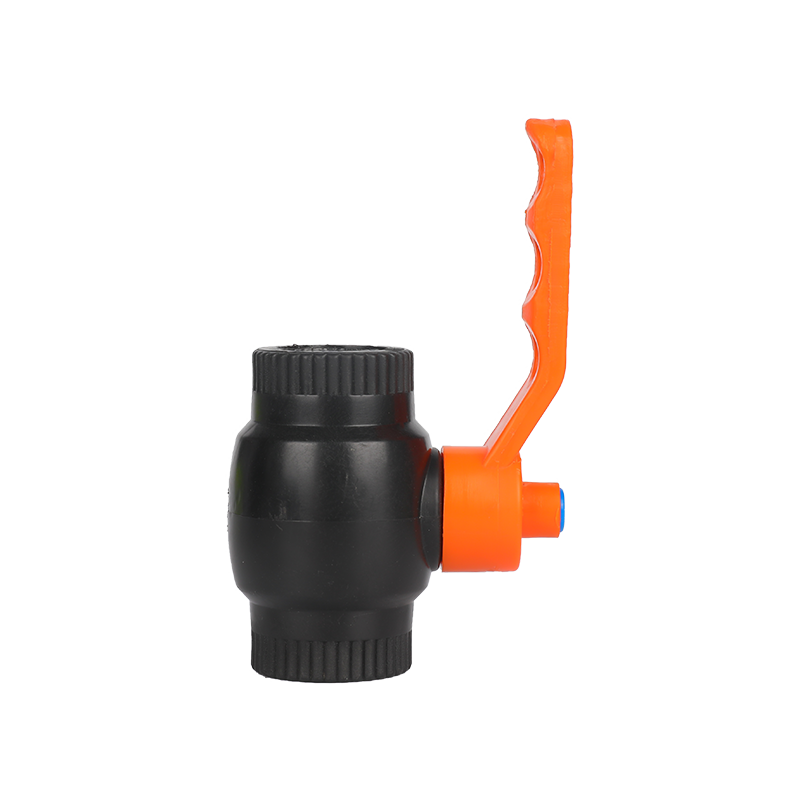HDPE 90 degree elbow butt fusion fitting produced ......
-

AddressZheJiang, China
-

Phone+86-17367068772
-

E-mail[email protected]
Will the performance of the Hdpe Valve change significantly in low or high temperature environments?
In low or high temperature environments, the performance of HDPE valves does change significantly, mainly in terms of the material's physical properties, strength, toughness, and sealing. The following is a detailed discussion of the performance changes of HDPE valves in low and high temperature environments and countermeasures:
Performance changes in low temperature environments:
Increased material brittleness: HDPE materials will lose toughness at low temperatures and may become more fragile. When the temperature drops below -20°C, the impact strength of HDPE is significantly reduced, and it is prone to fracture or cracking. This poses a threat to the service life and reliability of the valve.
Dimensional shrinkage: In low temperature environments, HDPE materials will shrink thermally, that is, their size will decrease. Although this shrinkage is relatively small, if it is not installed properly, it may affect the sealing performance of the valve or cause the installation to loosen, resulting in leakage.
Degraded sealing performance: As the temperature drops, the elasticity of the sealing rings, gaskets and other accessories of HDPE valves will also decrease, resulting in weakened sealing. Poor sealing may cause pipeline leakage or pressure loss.
Embrittling and accelerated aging: Low temperatures may accelerate the embrittlement of HDPE materials, especially valves exposed to cold environments for a long time. If there is moisture inside the valve, it may crack or break due to freezing expansion.
Countermeasures:
Use HDPE materials designed for low temperatures (such as low-temperature resistant HDPE).
In low-temperature environments, the valve can be protected by a heating system or external insulation layer to avoid the impact of sudden temperature drops.
Check the valve sealing performance regularly to ensure that the sealing materials (such as sealing rings) can adapt to the low-temperature environment.
Performance changes in high-temperature environments:

Reduced material strength: The strength of HDPE materials will be significantly reduced at high temperatures. Its softening point is about 120°C, and at higher temperatures, the rigidity and tensile strength of HDPE decrease, which may cause the valve to deform or fail. If the working pressure at high temperatures is too high, the valve may not be able to withstand it, or even plastic deformation may occur.
Reduced sealing performance: In high-temperature environments, the elasticity of HDPE gaskets and sealing rings will also be weakened, resulting in poor sealing and prone to leakage. In addition, high temperatures may cause the aging of sealing materials to accelerate, further reducing the sealing effect.
Thermal expansion and contraction: HDPE materials have a large thermal expansion coefficient, and the size of the valve will change significantly in high-temperature environments. If the temperature fluctuates greatly, the valve may lose proper tightening due to excessive expansion, or even leak or get stuck.
Increased material aging: HDPE materials may age due to long-term exposure to high temperatures, such as molecular structure breakage and surface cracking, which will affect the long-term reliability of the valve.
Countermeasures:
Use HDPE materials with stronger high temperature tolerance, or consider using other high temperature resistant materials such as polypropylene (PP) or metal valves.
In high temperature environments, cooling measures can be taken, such as installing insulation or heat dissipation devices to avoid direct exposure of the valve to excessive temperatures.
Ensure that the valve design takes thermal expansion into account and reserves sufficient installation space to avoid damage to the valve or pipeline due to excessive expansion.
Therefore, the use of HDPE valves in low or high temperature environments requires the selection of appropriate materials and designs according to specific temperature conditions to ensure the long-term reliability and safety of the valve. In extreme temperatures, alternative materials or other temperature control measures may be required to ensure the performance of the valve.
Product Display
-

HDPE 90 degree elbow butt fusion fitting
-

HDPE 45 degree elbow butt fusion fitting
HDPE 45 degree elbow butt fusion fitting produced ......
-

HDPE 22.5 degree elbow butt fusion fitting
HDPE 22.5 degree elbow butt fusion fitting produce......
-

HDPE equal tee butt fusion fittings
HDPE equal tee butt fusion fittings produced by in......
-

HDPE reducing tee butt fusion fitting
HDPE reducing tee butt fusion fittings produced by......
-

HDPE flange adaptor butt fusion fittings
HDPE flange adaptor butt fusion fittings produced ......
-

HDPE reducer butt fusion fitting
HDPE reducer butt fusion fitting produced by injec......
-

HDPE cross butt fusion fittings
HDPE cross butt fusion fittings produced by inject......
-

HDPE end cap butt fusion fitting
Mould injection hdpe end cap butt fusion fittings ......
-

PE/PPR socket fuison welding machine
PE/PPR socket fusion welding machine brief&fea......
-

Double U HDPE ground source pump fitting
Double U HDPE Ground source pump fitting produced ......
-

PIPE clamp HDPE ground source pump fitting
PIPE CLAMP HDPE Ground source pump fitting produce......
-
.jpg?imageView2/2/format/jp2)
Single U HDPE ground source pump fitting
single U HDPE Ground source pump fitting produced ......
-

U socket HDPE Ground source pump fitting
U socket HDPE Ground source pump fitting produced ......
 English
English Español
Español русский
русский عربى
عربى



Contact Us